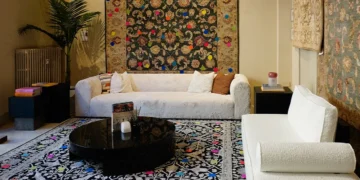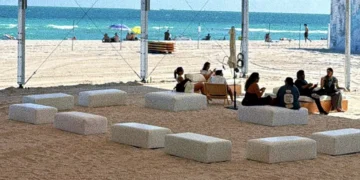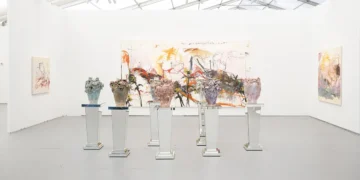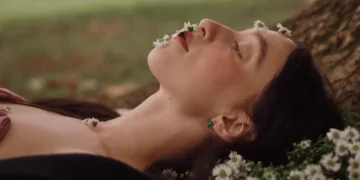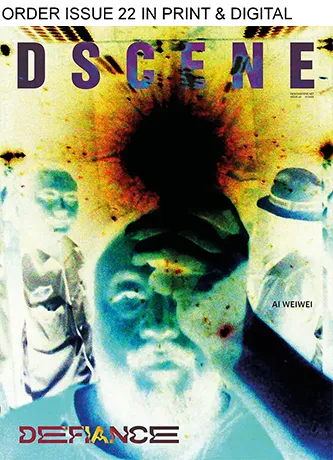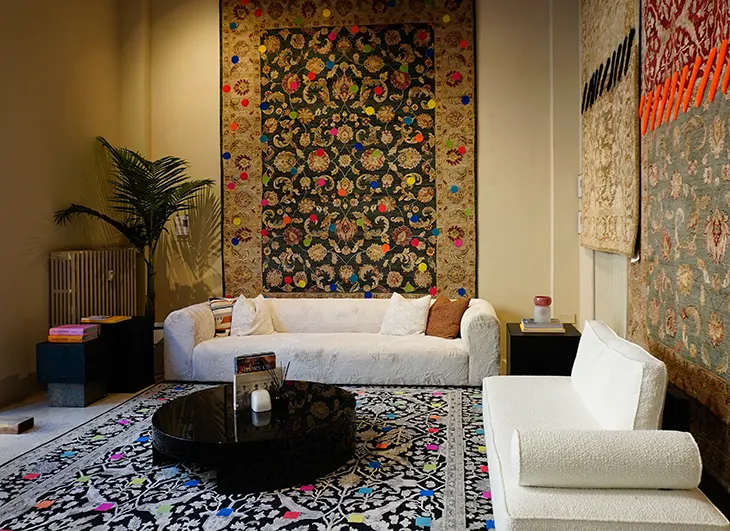
Known for bridging conceptual design with functional wit, Dutch designer Richard Hutten joins forces with Jaipur Rugs for Playing with Tradition, a vivid nine-piece collection of hand-knotted carpets presented during Milan Design Week 2025. The collection reinterprets ancient rug-making techniques through Hutten’s characteristically playful lens, combining layered motifs, 3D textures, and confetti-like bursts of color inspired by India’s Holi festival. Even bananas make an appearance, an unexpected nod to the humor of Charlie Chaplin and Laurel & Hardy, whose physical comedy still resonates.
INTERVIEWS
Crafted by artisans in Rajasthan using natural wool and silk, each rug carries the technical precision and tactile richness Jaipur Rugs has built its reputation on. Yet Hutten’s approach introduces something more, joy, curiosity, and experimentation that respects tradition while embracing risk. As Jaipur Rugs Artistic Director Greg Foster notes, the result evokes “immediate joy and surprise,” grounded in the dedication of artisans whose work reflects months of collaboration and dialogue.
Rooted in shared values around sustainability, artistry, and social impact, the collaboration represents more than a design exercise, it reflects a conscious approach to production. Hutten praises Jaipur Rugs not only for their craft expertise but also for their ethical model, which supports fair wages, education, and healthcare for artisan families. Together, they’ve created rugs intended not just for rooms, but for lives, objects designed to age, endure, and eventually carry memory.
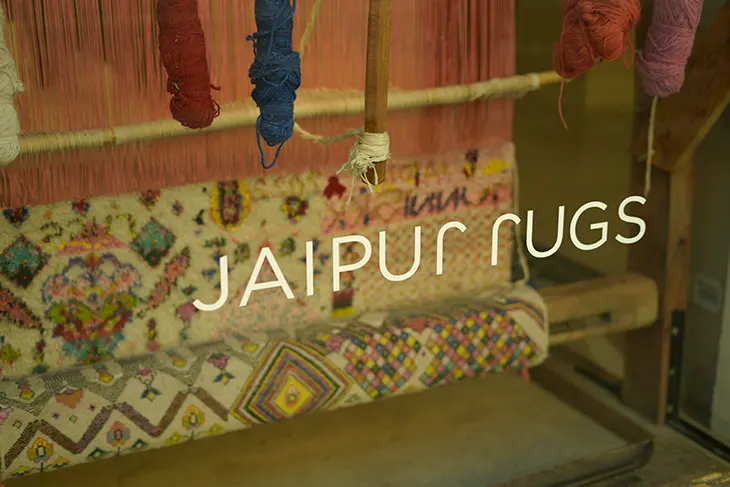
In the following conversation with DSCENE Editor-in-Chief Zarko Davinić, Richard Hutten reflects on what it means to design with care, humor, and intention. He speaks on honoring irregularities, trusting instinct, and why playing well always involves something serious underneath.

What inspired you to collaborate with Jaipur Rugs for the “Playing with Tradition” collection?
In my practice there always have been a strong focus on craft. Hand knotted rugs are one of the oldest crafts in the world, dating back at least 2500 years. For me it is important to keep this living heritage alive. Working with Jaipur rugs allows me to work with the biggest experts in the field of hand knotted rugs, and on top of that they have a very social agenda. So it was a no brainer for me to collaborate with Jaipur rugs when their CEO Yogesh Chaudhary asked me.
How did the artisans’ craftsmanship influence your design process for this collection?
The craftsmanship leads to small irregularities which adds to the beauty of the rugs. Instead of trying to avoid them, and make the rugs look like an industrial product, I embraced them.

Your designs often blend tradition with innovation. How does “Playing with Tradition” reflect this philosophy?
Playing stands for experimentation and just doing it without thinking. But playing also stands for fun, joy, happiness and optimism. Innovation will be the result of you play well. If you than combine this with tradition, the outcome pays respect to the past while looking at the future,
The collection incorporates elements like 3D textures, layered motifs, and playful patterns. What was the thought process behind these design choices?
When I design I always cherish the child in me.
I try to be open and curious but also innocent and ignorant. That is how I play. But that is also how children play and learn. By doing so I hope to transfer the fun I have while playing into my designs. During the process I discover things that work and things that don’t. Eventually the designer in me chooses which designs work; of course in close collaboration with Jaipur rugs, who also gave their important input.

How do you balance humor, as seen with the banana motifs, with the timelessness of handmade rugs?
Humor is tricky in design. When you tell a joke the first time it can be funny. But often the second time not anymore. That’s why I always try “softer” forms of humor. Some call it witty, some call it dry. In case of the Bananas rug you could call it slapstick, inspired by the timeless humor of Charly Chaplin or Laurel and Hardy, which stays funny every time you watch. Some people see a reference in the work Comedian by Maurizio Cattelan. Those will get a free roll of Duct tape with the rug.
The vibrant colors of Jaipur Rugs and patterns in the collection draw inspiration from India’s Holi festival. How did this cultural reference shape the collection’s aesthetic?
For some pieces in this collection, like the confetti and the squares, I was looking for colors which which were contrasting with the traditional pattern. By using not just random colors, but colors from the Holi festival, another layer of meaning was added. By the way, for the Blue Box rug I used another cultural reference, the colors of the Dutch Delft blue pottery from the 17th century.

Jaipur Rugs emphasizes ethical and sustainable practices. How important is sustainability in your work, and how does this collection reflect those values?
Sustainability is one of the cores of my practice. Therefor it was very important that only natural materials were used for this collection. In this case 100% pure wool, a material which comes from a renewable source, and is not polluting during the production. Jaipur rugs have a very social agenda. I have a very sustainable agenda. Both have the same purpose: creating a better life and a better planet. I would call it the perfect match to work with them.

The collection debuted at Milan Design Week 2025. What do you hope visitors took away from experiencing ‘Playing with Tradition’ in Milan?
Surprise, joy, happiness.
This collection is described as creating heirlooms of tomorrow. How does this align with your vision of design’s role in shaping the future?
We live in a world where overconsumption is one of the biggest problems. Saving the planet means we should buy less but better products. That is the future we need. When people buy this rug they not only get an object, they get a piece which is ethical produced, where the craftsmen and woman get properly paid and get healthcare and whose children get education. At the same time that get an object which is well constructed, made from natural long lasting materials, and with a design which can stand time and which ages well. The rugs can become the carrier of memories.
In my career I’ve designed many objects which age well, but which also keep their relevance over time. Some of these products are already in production for over 35 years, which proofs my point. So in my opinion this collection represents the future of design and the world.
They are social, sustainable, timeless and have a positive, optimistic vibe.
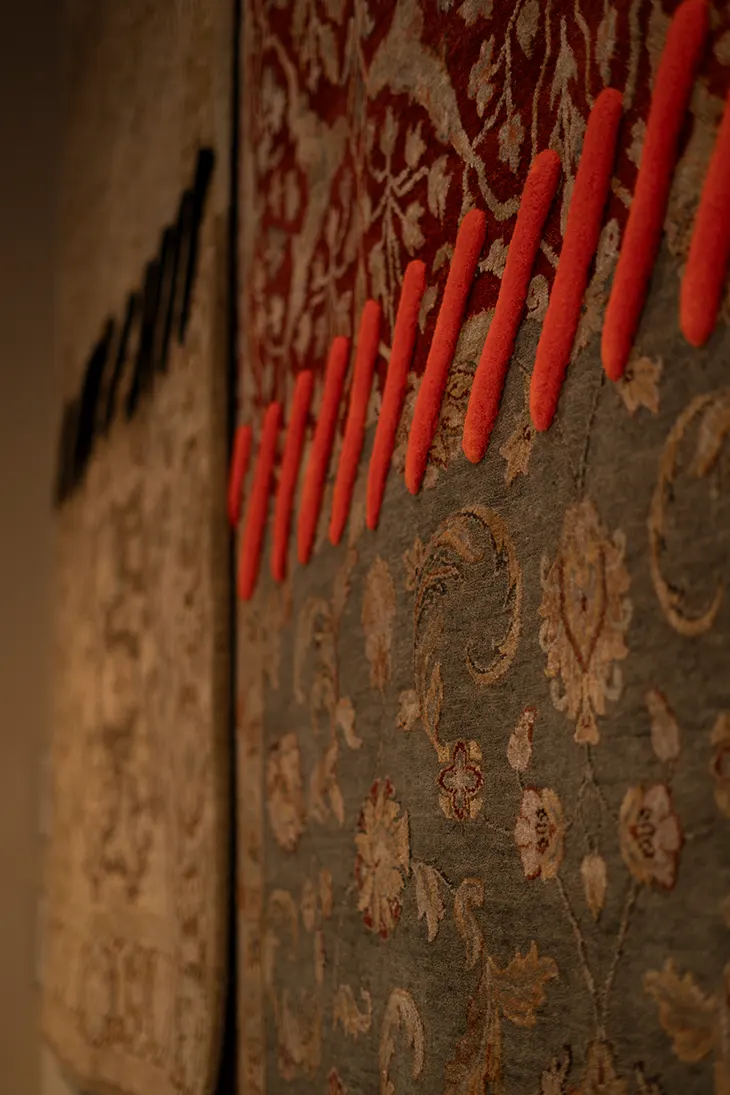
Finally, what has been the most rewarding aspect of working on this collection with Jaipur Rugs?
It is hard to say which aspect was the most rewarding while working on this collection. The whole process was rewarding. When Yogesh commissioned me he gave me carte blanch. It is always a good start to get so much trust from a client. Then the whole design process was “just” playing, in a close dialog with Jaipur rugs. (I put just between marks, because when you play well it’s always serious). The dialog between Jaipur rugs and me was very close and improved the whole project. That proofed that playing is the most fun when you do it together. In the mean time all boxes which I find important were ticked: social, sustainable and optimistic. The cherry on the pie, but not perse the most rewarding, was that the final result came out so well. People received it as I intended, which is a big reward. But the biggest reward will be that people start to live with them, and these objects will become part of their lives and carriers of their memories.
Discover full collection in our gallery:

